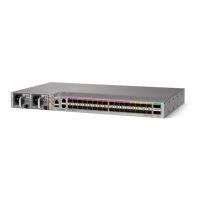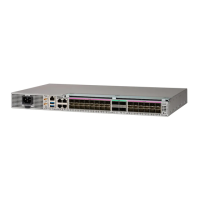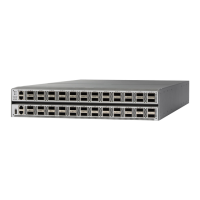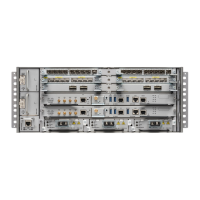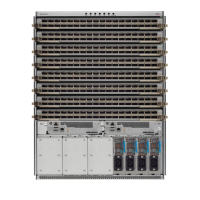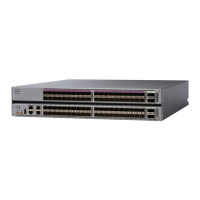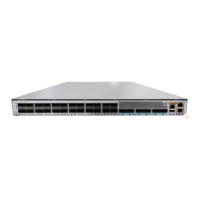An MPLS VPN Inter-AS provides the following benefits:
• Allows a VPN to cross more than one service provider backbone.
Service providers, running separate autonomous systems, can jointly offer MPLS VPN services to the
same end customer. A VPN can begin at one customer site and traverse different VPN service provider
backbones before arriving at another site of the same customer. Previously, MPLS VPN could traverse
only a single BGP autonomous system service provider backbone. This feature lets multiple autonomous
systems form a continuous, seamless network between customer sites of a service provider.
• Allows a VPN to exist in different areas.
A service provider can create a VPN in different geographic areas. Having all VPN traffic flow through
one point (between the areas) allows for better rate control of network traffic between the areas.
• Allows confederations to optimize iBGP meshing.
Internal Border Gateway Protocol (iBGP) meshing in an autonomous system is more organized and
manageable. You can divide an autonomous system into multiple, separate subautonomous systems and
then classify them into a single confederation. This capability lets a service provider offer MPLS VPNs
across the confederation, as it supports the exchange of labeled VPN-IPv4 Network Layer Reachability
Information (NLRI) between the subautonomous systems that form the confederation.
Inter-AS and ASBRs
Separate autonomous systems from different service providers can communicate by exchanging IPv4 NLRI
and IPv6 in the form of VPN-IPv4 addresses. The ASBRs use eBGP to exchange that information. Then an
Interior Gateway Protocol (IGP) distributes the network layer information for VPN-IPV4 prefixes throughout
each VPN and each autonomous system. The following protocols are used for sharing routing information:
• Within an autonomous system, routing information is shared using an IGP.
• Between autonomous systems, routing information is shared using an eBGP. An eBGP lets service
providers set up an interdomain routing system that guarantees the loop-free exchange of routing
information between separate autonomous systems.
The primary function of an eBGP is to exchange network reachability information between autonomous
systems, including information about the list of autonomous system routes. The autonomous systems
use EBGP border edge routers to distribute the routes, which include label switching information. Each
border edge router rewrites the next-hop and MPLS labels.
Inter-AS configurations supported in an MPLS VPN can include:
• Interprovider VPN—MPLS VPNs that include two or more autonomous systems, connected by
separate border edge routers. The autonomous systems exchange routes using eBGP. No IGP or
routing information is exchanged between the autonomous systems.
• BGP Confederations—MPLS VPNs that divide a single autonomous system into multiple
subautonomous systems and classify them as a single, designated confederation. The network
recognizes the confederation as a single autonomous system. The peers in the different autonomous
systems communicate over eBGP sessions; however, they can exchange route information as if they
were iBGP peers.
L3VPN Configuration Guide for Cisco NCS 540 Series Routers, IOS XR Release 6.3.x
4
MPLS L3VPN Overview
Inter-AS and ASBRs
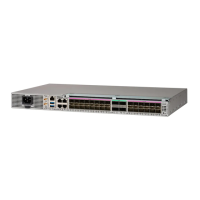
